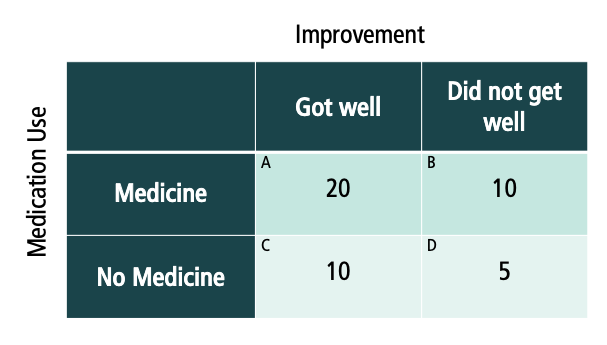Osterhaus, C., Magee, J., Saffran, A., & Alibali, M. W. (2019). Supporting successful interpretations of covariation data: Beneficial effects of variable symmetry and problem context. Quarterly Journal of Experimental Psychology, 72, 994–1004. doi:10.1177/1747021818775909
People often have difficulty interpreting covariation data presented in contingency tables. The present study investigates adults’ success and strategy use in interpreting covariation data as a function of two factors that may influence performance: symmetry and context. We hypothesised that symmetrical problems, which involve comparing two candidate causes, would elicit more adequate interpretations than asymmetrical problems, which involve comparing the presence and absence of one candidate cause. We also hypothesised that problems with grounded, concrete contexts would elicit more adequate interpretations than abstract problems. College students (N = 109) interpreted contingency tables in four conditions that varied in symmetry and context. Both factors influenced correct interpretations. A latent class analysis revealed three distinct strategies: (a) compute conditional probabilities (40%), (b) compare-two cells (23%), and (c) anchor and compare (37%), a novel strategy in which reasoners integrate data from all four cells in a stimulus-driven but incorrect way. Participants’ use of the conditional-probabilities strategy was higher in the symmetrical than the asymmetrical conditions, and higher in the concrete than the abstract conditions. Thus, even in a sample of college students, interpreting covariation data is a skill that is not fully consolidated, but instead depends on problem structure and context.



